|
17th November 2019 Sunday lunch time has rolled around and we're at 'The Sovereigns' in Woking. The 50 Fathoms hiatus continues. Today we played 'Concordia' Concordia is a resource gathering and economic expansion game set in the Roman era Mediterranean and surrounding areas. Ah, where would 'euro style' games be without the Roman era Mediterranean? Probably set even more in Renaissance Europe! What's in a game? Concordia has quite a lot of components.
It's worth mentioning the games resource tokens, normally it would be typical for the components to be coloured wooden blocks. Not so in Concordia, the tokens are shaped like the resource they represent. Thus the brick tokens look like clay bricks, wine tokens look like wine jugs and so on. It's a nice touch. Hows it play? Concordia has a fairly detailed setup. So, here we go.
The very basics of Concordia are simple: The active player plays a card from their hand carries out the action(s) listed on it. Personality cards can be acquired which perform other actions or are better versions of the starter cards. The starter cards are:
There are more types of cards available in the personality deck. There are specialist cards for each type of resource that allows the player possibly gain extra resources. There are also improved versions of starter cards and cards that make certain actions easier to perform. There are some more rules, but this is the gist of it Endgame There are 2 ways to trigger the endgame. If all the personality cards are bought or if a player builds or their houses. Then the final round is completed. Scoring is quite detailed and involved, in fact almost convoluted. All cards are attributed to 1 of 6 Roman gods such as Saturn, Jupiter, Mars etc. Each 'god' is scored differently: Mars for example, will score a player 2 victory points per meeple they have on the board per Mars card. All victory points are tallied, highest score wins. Overall
Here's the thing, I quite like Concordia, but I can't put my finger on exactly why? Maybe it's because it's a game about expansion and empire building, but a mercantile empire and not a military one. There is no direct conflict and the worse you can do to another player is to buy a personality card they want, or maybe block a route they want to use. It's all feels very 'eurogame'. Or maybe it's the deck building element. I feel there's something engrossing about having limited actions and needing to optimise strategies accordingly. Thinking about it, if there was too much direct competition between players, the deck building and planning wouldn't work so well within the game. Finally, I thought I would mention the scoring. Because there's 6 different ways to score, it's almost as if you don't need to think about the scoring and can just concentrate on building up your trade empire and let the points take care of themselves. But anyway, all in all, Concordia is a game I enjoy playing.
0 Comments
26th October 2019 Saturday evening has rolled round again and we're at Matakishi's for some gaming goodness. Tonight we played '1830', or to give it its full name; '1830: The Game of Railroads and Robber Barons'. As you will have surmised, this is a game about railroad building. Actually, it's probably fair to say it's the game about railroad building. What's in a game? 1830's components are very 'old-school' and clearly favour function over form.
How's it play? Setup 1830 was originally published in 1986. The version we played was published in 2011 by Mayfair Games. There was some head-scratching during set up as it turns out in this edition there are several variants of the game. We had been trying to set up the 'basic' version of the game, which apparently is different to the 'classic' version (Which is what we wanted to play.). The basic version of the game should be the classic version, do you hear Mayfair Games! Anyway, on with setup.
Bidding Bidding only occurs once in the game (Right at the start.). Players have to bid for the right to buy one of the private companies. Auctioning is actually very straightforward. One player makes a starting bid (Whoever is nominated as 'The Banker' should start.), then proceeding clockwise, each player has to make a higher bid or pass. If a player passes, then they are out of the auction permanently. When everybody has passed, then the player who was the highest bidder, gets the 'privilege' of choosing which private company to buy first (Yes, even though you may have bid loads of money, you still have to pay to buy a private company!), also the highest bidder gets to take the 'Priority' card for the first stock market round. Second highest bidder gets second choice of buying a private company and so on until all the players have a private company. Stock market and operating rounds This is where the majority of the game takes place. At the beginning of the game there will be a stock market round followed by an operating round. Later on, there will be a stock market round followed by two operating rounds. Even further into the game, the stock market round will be followed by three operating rounds. Stock market round
When a company is floated, the following occurs:
So now we're on to the operating round(s). The following occurs:
Endgame Play continues until all the money from the bank has been paid out to the players. Winning is determined by who has acquired the most personal wealth. Players add up all the personal money they have accumulated and the combined stock market value of all the shares they own. The operating capital of any companies that the player may control is not added to the final tally. Highest score wins. Overall
It's a testament to 1830's design that 30 years on, it's mechanics and rules are still totally solid and watertight. The stock market round is well balanced so it has enough depth to be engaging and interesting, but is not head scratching in complexity. I really like it that player's money is entirely separated from the money needed to run a company. I also like how in order to maximise your personal profitability, you'll also need to invest in companies run by other players. Because no player can own more than 60% in a company, this will happen. The operating rounds give players plenty of choice and options when expanding their companies. Eventually there will be sets of intricate and convoluted rail networks interacting and criss-crossing with each other. Players also need to pay close attention to the money that their companies maintain as having a company go bankrupt will have serious consequences for the stock value. On the box of 1830, it says that it takes 3-6 hours to play and that's no exaggeration. It is the only drawback to 1830 is that I can think of. 1830 is a classic and there's no doubt about it. There are plenty of other rail building games and many of them are good. But if you've got the hours to spare, none are as good as 1830. It only remains for me to say that it seems that the game was last in print a few years ago. It's criminal that it's still out of print now, considering just how good a game 1830 is. 2nd July 2019. The second game of gaming night at 'The Sovereigns' was 'Isle of Skye'. In my imagination, one day someone was playing 'Carcassonne' and they thought. 'Y'know what this needs is more depth. Oh and it needs to be set in a remote part of Scotland!'. And the result of that thought was 'Isle of Skye'. In reality the link to Carcassonne is fairly superficial, both are landscape-based tile laying games and that's about it for similarities Isle of Skye also contains an intriguing trading mechanic. What's in a game?
How's it play?
First, there's the set up. The scoring tiles are shuffled and 4 of them are placed on the main game board. Each tile has a different method or way of scoring points. Each player is also given some currency (Which they keep hidden behind their screen at all times.). The game is played over 5 turns and the game is scored at the end of these 5 turns: In each turn different scoring tiles will used for scoring. In the 1st turn, one tile is used, in turns 2 & 3, two tiles are used and in turns 4 & 5 three tiles are used. Once set up is completed, the game begins. There are 3 phases to every turn. Income Each player draws currency from the gold supply. Trading The trading mechanics in Isle of Skye are like no other game I've played. Each turn, all the players will acquire some tiles and must sell them, but they use their own money to do so!
Playing tiles Once all of the tiles have been bought, players have to lay their tiles. The rules for laying tiles is pretty straightforward. Tiles can be placed down in any orientation, but must honour all the other tiles that it is adjacent to. Each player creates their own 'map' independent of all other players. Overall? I Liked Isle of Skye. I particularly like the mechanics for selling tiles. You given some intriguing and risky strategies to use. If you draw tiles you don't want, you can try to sell them at a low price to get rid of them. But underselling the tiles may help someone else with very little benefit to yourself. Conversely, putting a high price on tiles may them price them out of other peoples' ranges. Ending up with you paying a high cost for tiles you don't want. Additionally, because you use your own funds to put a price on tiles. If you price your tiles too highly, you will be left with little gold to buy other player's tiles. There's lots of potential decisions here and that's good. When laying tiles, there's lots of decisions to be made too. As well as the 3 land types, field, mountain and water, there are also features such roads, lighthouses, farms etc. All of these can be used in scoring, but they will do so differently over the rounds. So you need to prioritise how you lay tiles to maximise scoring. So like I said I like Isle of Skye and it's been added to 'the list'. 12th February Gaming night at The Sovereigns in Woking Bohanza is a card game about growing beans and trading beans. Mostly it's about trading beans. Bohanza is a 'set-collecting' game with a great little wrinkle. Unusually, it supports up to 7 players and on this occasion we got up to 7! I've never played it with that many people - excellent! Gameplay is reasonably simple. First, there is one important rule everyone must remember. At the start of the game, each player is dealt a hand of cards.
This rule is the crux of the game, it's what drives the entire game. Here's why.
So you need to get rid of the wrong cards in your card before you have to play them. How do you do that? You trade them away of course. Once the active player has played their mandatory card, they can choose to play another card from their hand. After this, they draw 2 cards from the deck and places in them in front them in the play area. Now trading begins. At this point, the active player can trade any card from their hand, or any of the 2 face up cards with any other player. The active player can also 'donate' cards to other players (although the other player can reject the offer). Curiously other players can try to donate card to the active player. Trades can only occur with the active player. Once trading has concluded, all traded cards must be immediately planted. If the active player still as any of the 2 face up cards they just drew. And that's how trading is done. The only other thing to explain is selling crops. Players can sell a crop at pretty much any time. This will earn them up to 4 gold, depending on how many cards they have collected for that set. Different beans require different amounts of cards to earn gold. The player then keeps a number of cards from the set as their gold. The remaining cards are placed into the discard pile. This is worthy of noting, because not all the cards from a set is put back into the set. When the draw deck is depleted, the discard pile is shuffled and becomes the draw deck. This is done twice (thus the deck played through a total of 3 times). Once the deck is depleted a 3rd time, the game ends. The player with the most gold, wins. There you have it. Bohanza is good because it forces players to negotiate and trade. Most games that include trading have it as a option or a choice. But in Bohanza, choosing to not trade will probably have dire consequences. Deep Sea AdventuresIn Deep Sea Adventure each player is a treasure-hunting diver who is looking to score big. The game is played over 3 rounds and the player with the most valuable treasures after the end of the 3rd round is the winner. Deep Sea Adventure packs a whole lot of push-your-luck fun into a little box. Whilst this is a competitive game, it sneaks a co-operative little mechanic into the rules which in turn players can try to twist to their own advantage. The game begins with all the players' meeples in a submarine. Beneath the sub is a winding trail of face down markers. Each marker represents a treasure that can be collected by a diver. The value of the treasures also vary, but the deeper you dive, more valuable the treasure. The more sides a marker has, the more potential value it has. Play goes like this:
And that's it, that's it for the rules. Ok, there's a bit more.
And that really is it for the rules. Deep Sea Adventure is all about pushing you luck. Pushing your luck in picking up treasures (so tempting to pick up one extra treasure, just one little treasure - it won't make much of a difference, right). Pushing your luck in movement. The hop mechanic can prove helpful or can push you way too deep into the depths. Finally, pushing your luck with the communal oxygen supply. This is the game's best mechanic. This is what turns it from a 'OK' game into a 'good' game. The communal oxygen means that you have watch what the other players are picking up. It forces you to try and think a whole round ahead. When playing Deep Sea Adventure, there comes a point when oxygen starts to matter. For a couple of turns, no one picks up treasure. Everyone wants something a little better and is willing to dive a little deeper to get it. But then, it all changes, as treasures are picked up, oxygen is used up. The change may seem quite subtle, but can actually be quite dramatic. No oxygen being used, to suddenly 4-5 every round. Being able to spot and react to this change is key to winning in my opinion. In a six player game, at some point every player will have picked up at least one treasure, that means six points of oxygen will be used up before your next turn. That's about a quarter of all the available oxygen. Some players will try and load themselves with treasures to burn up oxygen as they return to the sub, (this is in itself a risky strategy as it also slows movement - several times I've seen loaded down players one or 2 spaces away from the sub and not move at all until the oxygen runs out). All of this means that you can never be complacent about the oxygen supply and this Deep Sea Adventure is good fun and a good game. 5th February Another Tuesday night at 'The Sovereigns'. The ladies bathroom was closed and most of the pub smelt of poo! But board gamers are a tough as it gets. So we endured and played on. The first game of the night was 'Century: Eastern Wonders'. This is the 3rd 'Century' game I've seen the other two are: Century: Spice Road. Century: Golem Edition. I've played Century: Spice Road previously and it was alright. It was sort of a deck building Resource trading/management card game. But a specifc random element in the game 'Really pisses me off to no end!' But enough talk of a game that I'm not actually blogging about. So Century: Eastern Wonders is a sequel of sorts to Spice Road game and contains rules for combining both games into a single game. Curious - but something for another time. In Eastern Wonders, you control a merchant ship that travels around, trading spices for profit. The first thing I'm going to say for this game is that even though it's more or less just a bunch of boat shaped meeples sitting on tiles - it is quite a pretty looking game. Unfortunately I didn't get a good photo of it. On to the gameplay.
First; let me explain the different spices. There are 4 types of spices, ranked from least to most valuable they are: Yellow - red - green - brown. In your turn you can move your ship 1 or more spaces, then you can perform 1 of 3 actions after moving.
There are some other mechanics, such as 'outposts'. Each player has their own board. On their board are 20 outpost markers arranged in 4 rows of five. In order to use the market action on a tile, the player must place a outpost marker on the tile. However, there are specific rules on how out post markers are removed from a player's board and placed on a market tile. Each market tile has a spice symbol (yellow, red, green, brown) and each of the 4 rows of outposts has a corresponding symbol. Thus: If playing an outpost marker on to a market tile with a yellow symbol, it must be the left-most outpost marker from the yellow row that is placed on to the market tile. This is important, as how markers are removed from your board makes difference.
And that's good. There's more than one strategy you can pursue to earning victory points. And there always seems to be a meaningful decision to make. Sometimes you just need to recognise and adapt your tactics when circumstances change. And that's it. I enjoyed Century: Eastern Wonders enough that it goes on to the 'would like to own' list and I may revisit Century Spice Road in the future with a different mindset. Dang! Just realised; I blogged a game tabout spices and I didn't make a single reference to 'Dune'. Well The spice mu - ah too late, screw it! |
AuthorI play, I paint. Archives
March 2024
Categories
All
|

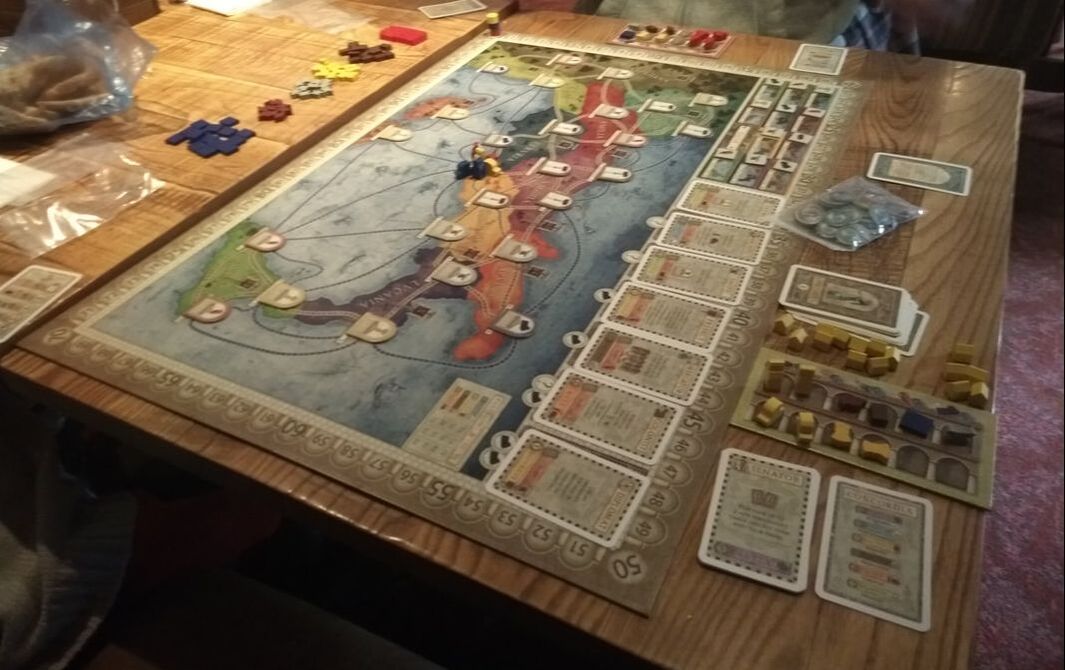
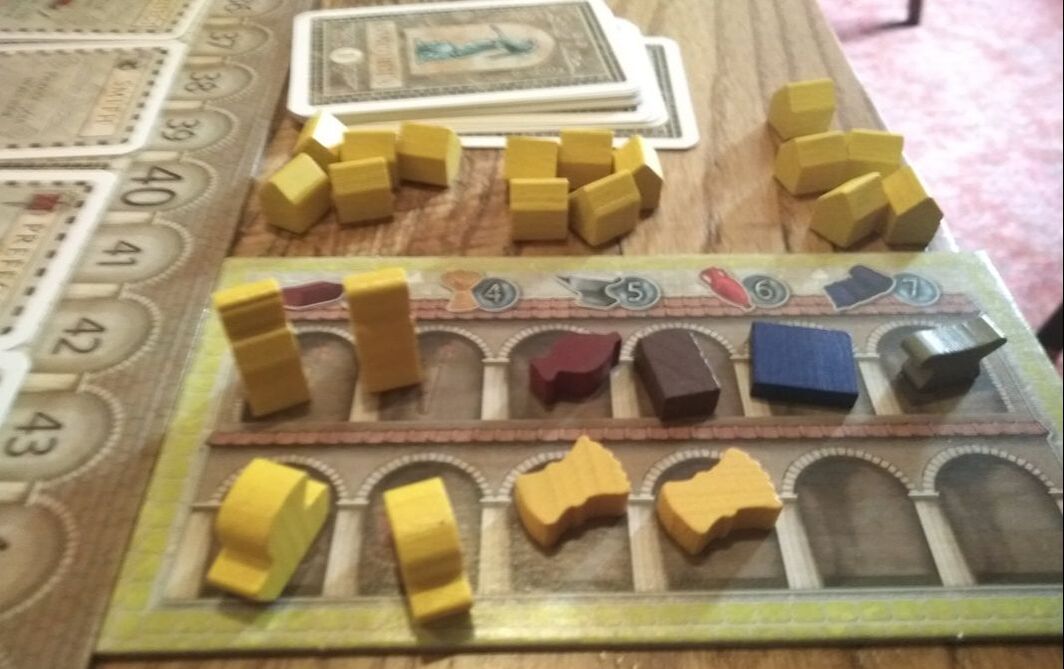
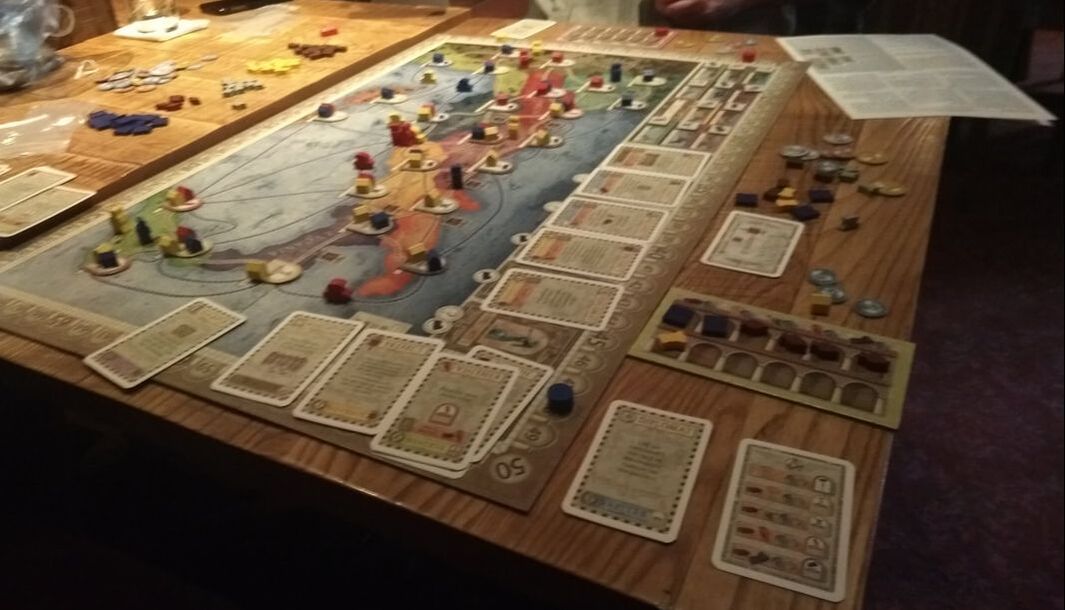
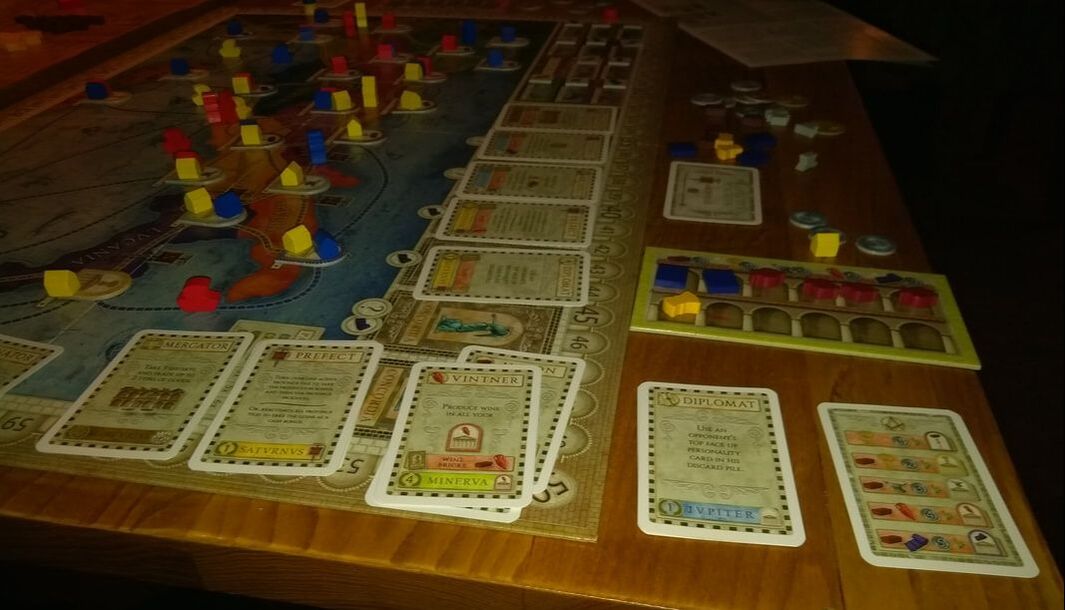
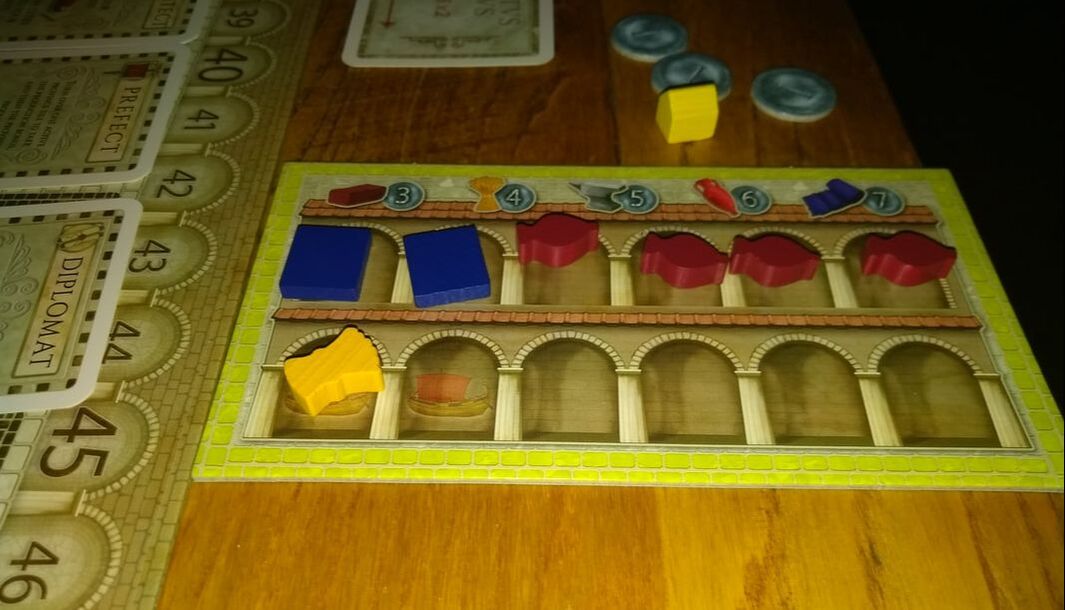


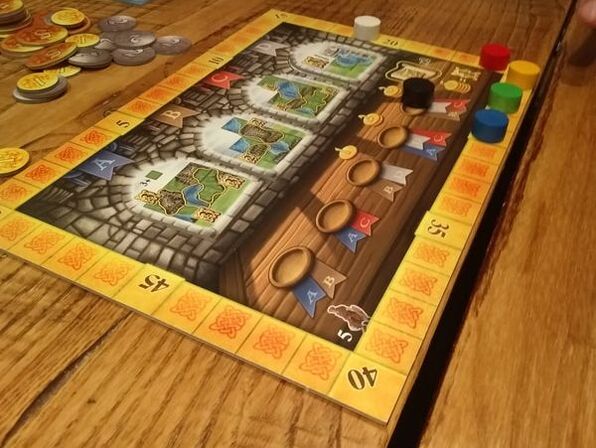
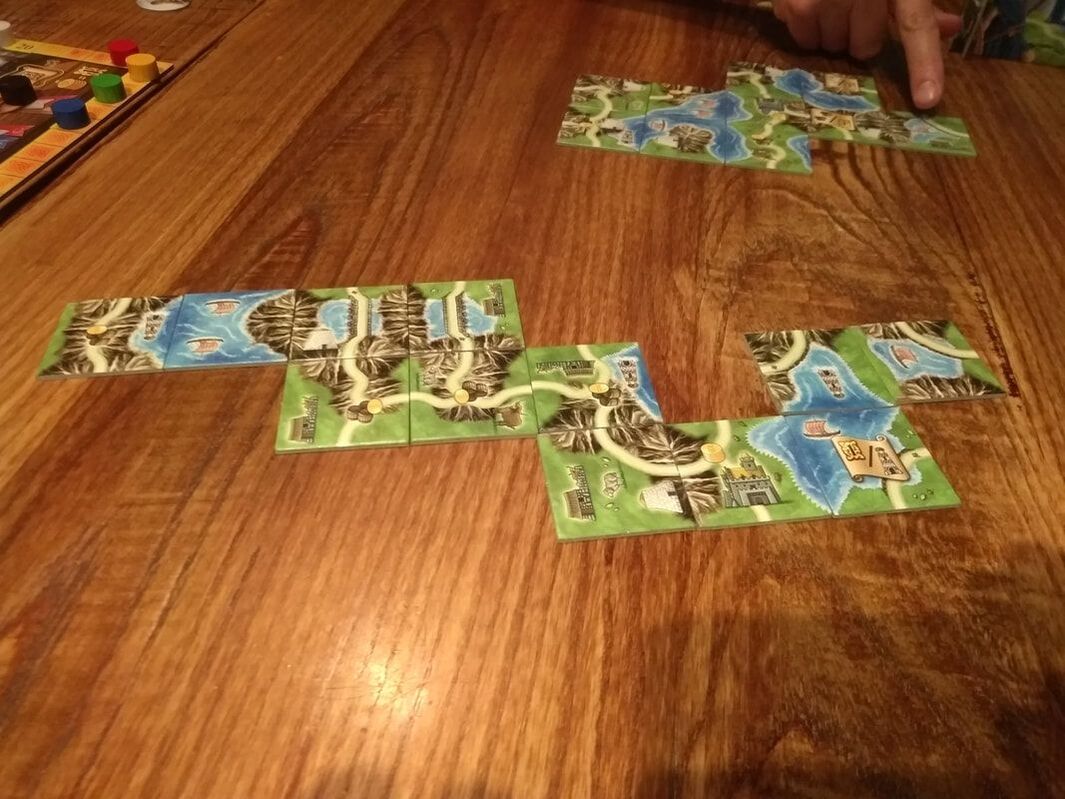
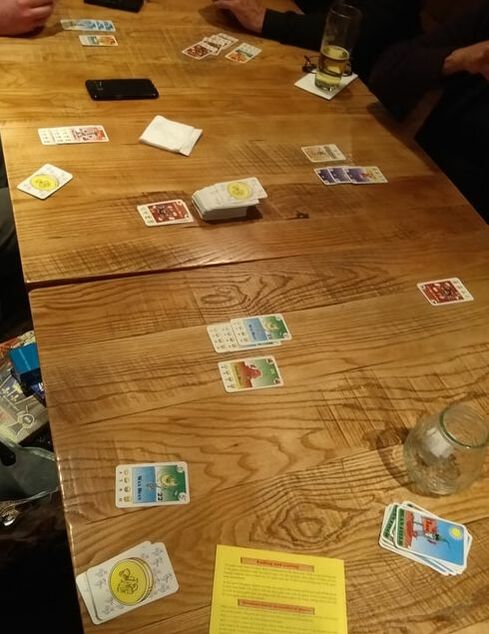
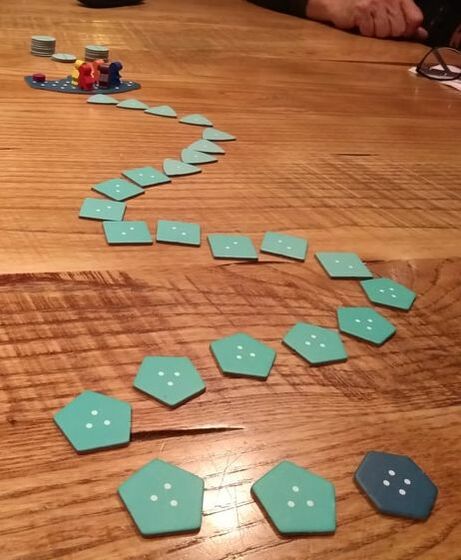
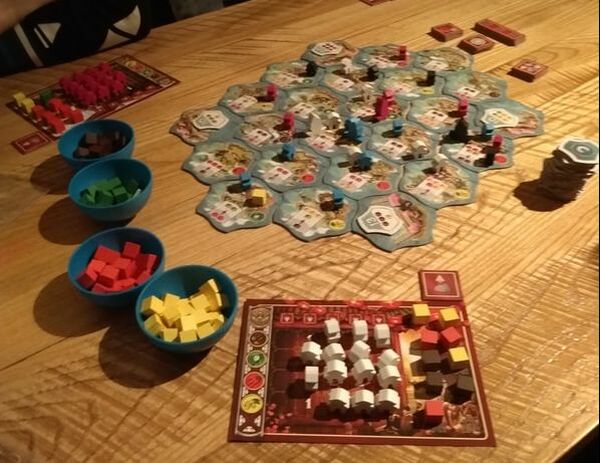
 RSS Feed
RSS Feed
